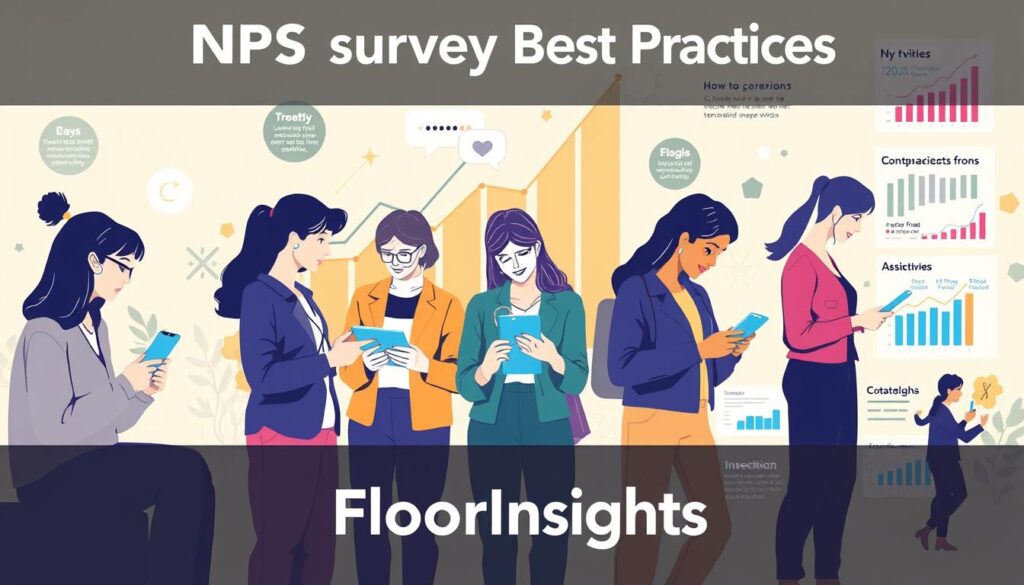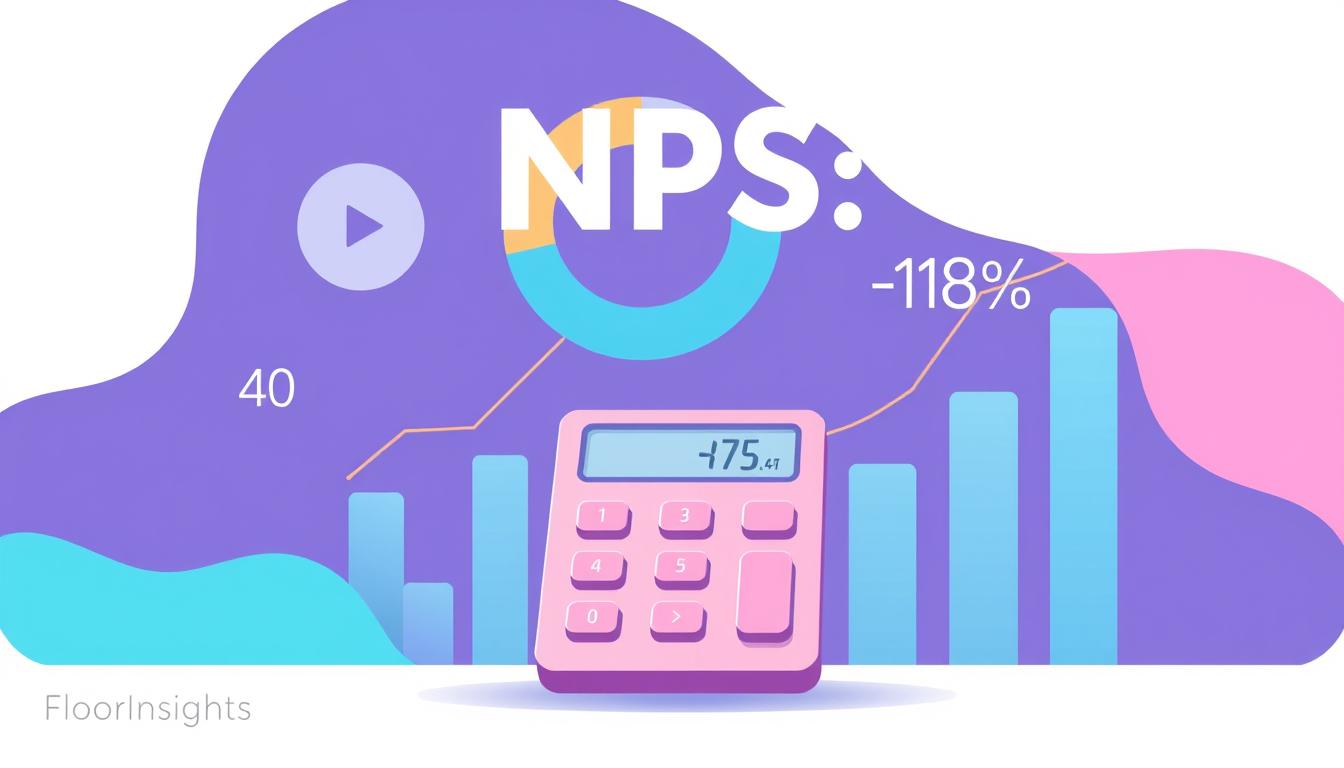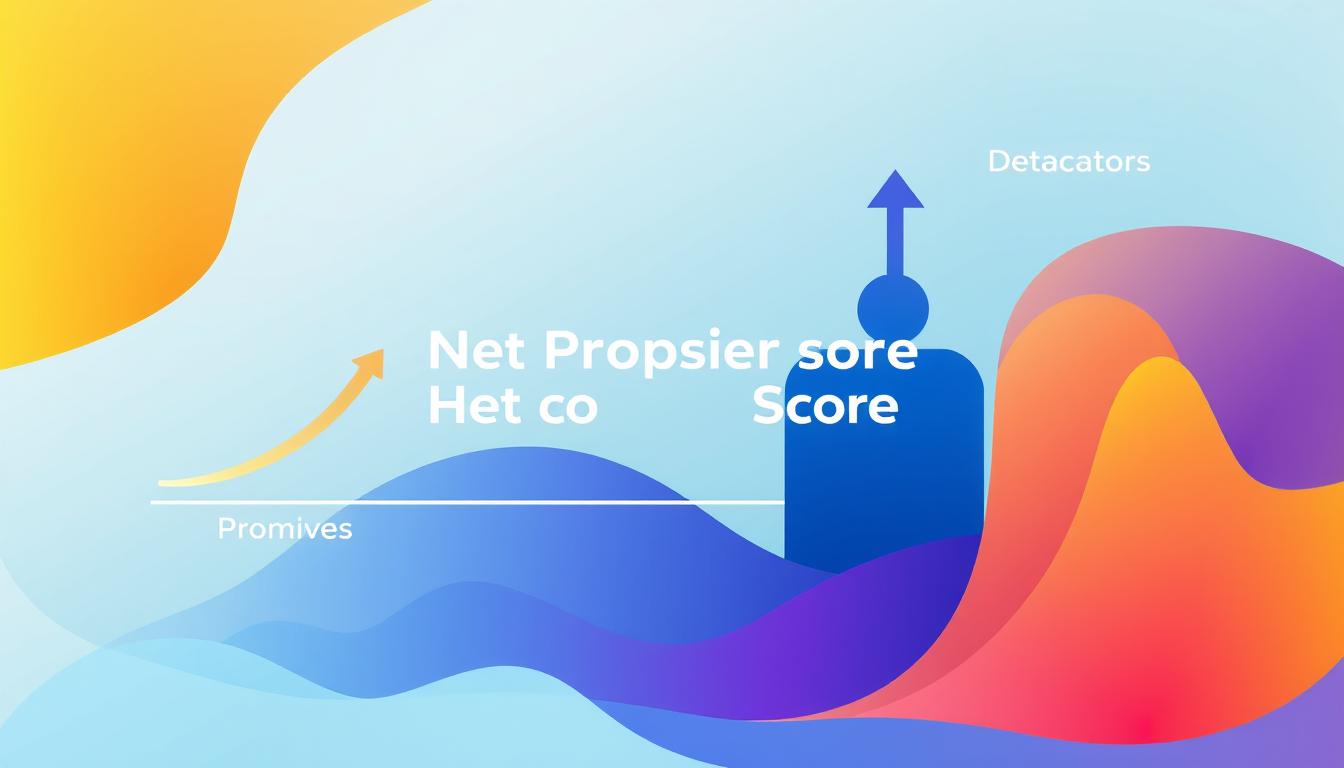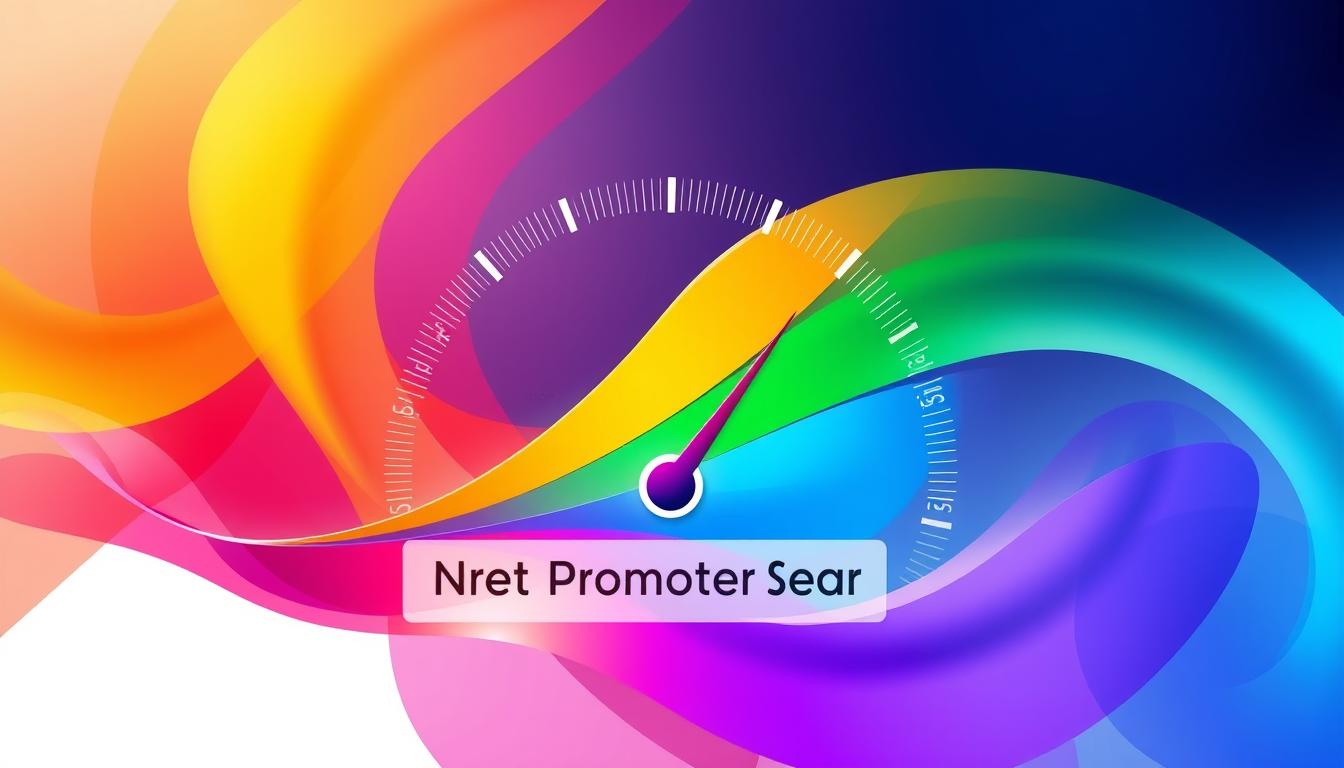In today’s competitive business landscape, the Net Promoter Score (NPS) has become a crucial metric for measuring customer loyalty and driving business growth. As we navigate the Indian market, we recognize the pivotal role that customer service plays in enhancing NPS and fostering long-term customer relationships. In this article, we will explore the strategies and best practices that can help organizations in India elevate their customer service, boost customer satisfaction, and ultimately, improve their Net Promoter Score.
Key Takeaways
- The Net Promoter Score (NPS) is a valuable metric for measuring customer loyalty and driving business growth.
- Effective customer service is essential in improving NPS and enhancing the overall customer experience.
- Strategies for streamlining customer support channels and prioritizing response times can significantly impact customer satisfaction.
- Gathering and leveraging customer feedback is crucial for continuous improvement and optimization of the customer experience.
- Fostering a customer-centric culture and empowering customer service representatives are key to driving long-term customer loyalty.
Introduction to Net Promoter Score
As businesses strive to deliver exceptional customer experiences, a crucial metric that has gained widespread adoption is the Net Promoter Score (NPS). This powerful metric measures customer loyalty and the likelihood of customer referrals, providing valuable insights into the overall satisfaction of a company’s clientele.
What is Net Promoter Score?
Net Promoter Score is a simple yet effective customer experience metric that asks customers a single question: “How likely are you to recommend our company/product/service to a friend or colleague?” Customers respond on a scale of 0 to 10, with 0 being “not at all likely” and 10 being “extremely likely.” Based on their responses, customers are categorized into three groups:
- Promoters (score 9-10): Loyal, enthusiastic customers who are likely to refer others
- Passives (score 7-8): Satisfied but unenthusiastic customers who are unlikely to refer others
- Detractors (score 0-6): Unhappy customers who are unlikely to recommend and may even discourage others
Importance of NPS in Customer Experience
The Net Promoter Score is a valuable tool for businesses to gauge their overall customer satisfaction and identify areas for improvement. A high NPS indicates a strong, loyal customer base that is likely to generate positive word-of-mouth and drive growth through referrals. Conversely, a low NPS signals the need for businesses to enhance their customer experience, address customer pain points, and foster a more engaged and satisfied customer base.
By understanding their Net Promoter Score and the factors that influence it, companies can make informed decisions to enhance customer satisfaction, improve customer loyalty, and ultimately, drive sustainable customer experience success.
Enhancing Customer Satisfaction
Delivering superior customer satisfaction and customer experience is crucial for improving customer loyalty and bolstering customer relationship management. By implementing strategic initiatives, companies can ensure their customers consistently receive exceptional service, leading to enhanced Net Promoter Scores (NPS) and long-term business growth.
One effective approach is to streamline customer support channels, providing customers with seamless, omnichannel access to assistance. This integrated approach not only improves customer satisfaction but also streamlines internal operations, enabling faster response times and more efficient issue resolution.
Additionally, gathering valuable customer feedback through well-designed NPS surveys can provide invaluable insights into areas for improvement. By actively soliciting and acting upon customer insights, businesses can cultivate a customer-centric culture, demonstrating their commitment to delivering exceptional customer experiences.
Empowering customer service representatives through comprehensive training and development programs is another crucial step. Equipping frontline staff with the necessary skills and knowledge to address customer inquiries effectively can significantly enhance customer satisfaction and customer loyalty.
By embracing these strategies and fostering a customer-centric mindset throughout the organization, companies can consistently deliver exceptional customer experiences, ultimately driving improved Net Promoter Scores and long-term business success.
Streamlining Customer Support Channels
In today’s fast-paced digital landscape, providing seamless and efficient customer support across multiple channels is crucial for maintaining a positive customer experience. From phone and email to chat and social media, a well-executed omnichannel support strategy can greatly enhance the customer relationship management efforts of any organization.
Omnichannel Support Strategy
By adopting an omnichannel approach, businesses can ensure that customers receive consistent and personalized support, regardless of the channel they choose to interact with. This not only improves customer satisfaction but also fosters a stronger sense of brand loyalty.
Prioritizing Response Times
Equally important is the ability to respond to customer inquiries in a timely manner. Prompt response times demonstrate the company’s commitment to customer support and can make a significant difference in the overall customer experience. Leveraging technology and streamlining internal processes can help organizations achieve faster response times and deliver a higher level of customer service.
| Channel | Average Response Time | Customer Satisfaction Score |
|---|---|---|
| Phone | 45 seconds | 4.8/5 |
| 4 hours | 4.3/5 | |
| Live Chat | 2 minutes | 4.6/5 |
| Social Media | 6 hours | 4.1/5 |
By prioritizing response times and delivering exceptional customer support across all channels, organizations can significantly improve their Net Promoter Score and foster a loyal customer base.
Net Promoter Score and Customer Loyalty
A strong correlation exists between a company’s Net Promoter Score (NPS) and its customer loyalty. NPS is a powerful metric that not only measures customer satisfaction but also predicts customer retention, brand advocacy, and the likelihood of customer referrals – all of which are crucial for long-term business success.
Numerous studies have shown that companies with high NPS scores tend to enjoy greater customer loyalty and retention rates. Loyal customers are more inclined to continue doing business with a brand, make repeat purchases, and provide valuable word-of-mouth referrals to their friends and colleagues.
In fact, research indicates that a 12-point increase in a company’s NPS can lead to a doubling of its growth rate. This underscores the importance of prioritizing customer experience and driving positive sentiment through exceptional service and support.
| Metric | High NPS | Low NPS |
|---|---|---|
| Customer Retention | 81% | 18% |
| Brand Advocacy | 54% | 10% |
| Likelihood of Referrals | 71% | 23% |
By consistently monitoring and improving their Net Promoter Score, businesses can foster a loyal customer base, drive Brand Advocacy, and unlock new avenues for sustainable growth.
“Loyal customers, they don’t just come back, they don’t simply recommend you, they insist that their friends do business with you.” – Chip Bell
Gathering Valuable Customer Feedback
At the heart of improving customer experience lies the ability to gather valuable feedback from our customers. One of the most effective tools for this is the Net Promoter Score (NPS) survey, which provides a deep understanding of customer sentiment and loyalty.
NPS Survey Best Practices
To unlock the full potential of the NPS survey, it’s crucial to follow best practices. Here are some key considerations:
- Timing: Conduct the survey at strategic touchpoints, such as post-purchase or after a customer service interaction, to capture timely feedback.
- Question Wording: Craft a clear and concise question that focuses on the customer’s likelihood to recommend your product or service.
- Scale: Utilize a 0-10 rating scale, which allows for a nuanced understanding of customer sentiment.
- Open-Ended Feedback: Supplement the NPS score with open-ended questions to gather qualitative insights.
- Segmentation: Analyze the NPS data across different customer demographics and touchpoints to identify patterns and trends.
By following these best practices, you can gather customer feedback that is both actionable and insightful, empowering you to enhance the customer experience and drive customer satisfaction.

“The voice of the customer is the most powerful force for driving business transformation.”
Remember, the NPS survey is not merely a metric, but a crucial tool for understanding your customers’ needs and preferences. By leveraging these insights, you can make strategic decisions that truly resonate with your audience and foster long-lasting customer loyalty.
Empowering Customer Service Representatives
At the heart of delivering exceptional customer service and improving Net Promoter Scores (NPS) are the frontline customer service representatives. These individuals play a pivotal role in shaping the customer experience, and investing in their training and development is crucial for empowering them to provide the level of service that fosters customer loyalty and advocacy.
Training and Development
Comprehensive training programs for customer service teams are essential for equipping them with the necessary skills and knowledge to handle a wide range of customer interactions effectively. These programs should cover various aspects, including:
- Product and service knowledge: Ensuring representatives have a deep understanding of the company’s offerings to provide accurate and insightful information to customers.
- Communication and interpersonal skills: Developing active listening, empathy, and conflict resolution abilities to deliver exceptional customer service.
- Problem-solving and decision-making: Empowering representatives to make informed decisions and resolve customer issues efficiently.
- Customer experience best practices: Educating representatives on strategies to enhance the overall customer satisfaction and customer experience.
By investing in the continuous employee training and development of customer service teams, organizations can equip their frontline representatives with the necessary tools and knowledge to deliver the level of service that drives customer loyalty and positive Net Promoter Scores.
Leveraging Customer Data for Insights
In today’s data-driven business landscape, companies that effectively leverage customer data can gain invaluable insights to enhance their Net Promoter Score and overall customer experience. By analyzing customer feedback and behavior, organizations can identify pain points, optimize processes, and make informed, data-driven decisions.
One of the key ways to leverage customer data is through the analysis of customer insights. This involves closely examining customer feedback, including survey responses, social media interactions, and direct communication. By understanding the voice of the customer, companies can pinpoint areas of concern and develop targeted strategies to address them.
| Data Source | Insights Gained |
|---|---|
| NPS Surveys | Identify drivers of customer loyalty and satisfaction |
| Customer Feedback | Uncover pain points and areas for improvement |
| Customer Behavior Data | Optimize the customer experience and identify upsell/cross-sell opportunities |
By harnessing the power of customer data, organizations can make strategic decisions that directly impact their Net Promoter Score. This data-driven approach enables companies to prioritize the most pressing customer needs, streamline support channels, and continually refine their customer experience strategies.
“The ability to gather, analyze, and act on customer data is a critical competitive advantage in today’s business landscape.”
Ultimately, leveraging customer data for insights is a key component in driving sustainable growth and enhancing customer loyalty. By empowering their teams with this valuable information, companies can make data-driven decisions that foster long-term success and set them apart in the market.
Fostering a Customer-Centric Culture
Developing a strong customer-centric culture is essential for driving continuous improvement in customer service and, ultimately, enhancing the Net Promoter Score. At the heart of this effort lies the commitment of organizational leadership and the engagement of employees across the company.
Leadership Commitment
Creating a customer-centric culture begins with the unwavering commitment of the leadership team. Executives must lead by example, demonstrating their dedication to delivering exceptional customer experiences. This may involve regular customer interactions, setting ambitious customer experience goals, and ensuring that all strategic decisions prioritize the needs and preferences of the customer.
Employee Engagement
Fostering a customer-centric culture also requires the active engagement of employees at all levels. By empowering and training customer service representatives to be proactive problem-solvers, organizations can cultivate a workforce that is passionate about delivering exceptional customer experience. Regular feedback, recognition programs, and opportunities for professional development can further strengthen employee engagement and reinforce the importance of customer-centric thinking.
| Key Factors for Fostering a Customer-Centric Culture | Description |
|---|---|
| Leadership Commitment | Executives lead by example, prioritizing customer needs in strategic decisions and demonstrating their dedication to exceptional customer experience. |
| Employee Engagement | Empowered and trained customer service representatives who are passionate about delivering outstanding customer service and contributing to a customer-centric culture. |
By fostering a customer-centric culture through strong leadership and employee engagement, organizations can drive continuous improvements in customer experience and ultimately enhance their Net Promoter Score.
Continuous Improvement and Optimization
Maintaining a strong Net Promoter Score is an ongoing process that requires diligent continuous improvement and optimization of the overall customer experience. By regularly reviewing NPS data, companies can identify areas for enhancement and implement strategic changes to boost customer satisfaction and loyalty.
One key step in this journey is to establish a structured approach to customer feedback collection and analysis. Regularly conducting NPS surveys, along with gathering qualitative insights, can provide valuable data points to guide decision-making. It’s essential to pay close attention to customer pain points, preferences, and emerging needs to ensure the customer experience remains relevant and personalized.
- Analyze NPS trends and patterns over time to uncover opportunities for improvement.
- Implement targeted initiatives to address specific pain points, such as streamlining support channels or enhancing product features.
- Continuously monitor the impact of these changes and fine-tune the approach based on evolving customer feedback.
By fostering a culture of continuous improvement and optimization, organizations can consistently elevate their Net Promoter Score and build a loyal customer base that advocates for the brand. This holistic approach to enhancing the customer experience is the foundation for long-term success and sustainable growth.
| Metric | 2022 | 2023 | 2024 (Projected) |
|---|---|---|---|
| Net Promoter Score | 45 | 53 | 60 |
| Customer Satisfaction | 78% | 84% | 90% |
| Customer Retention Rate | 82% | 87% | 92% |
The data in the table above showcases the positive impact of our continuous improvement and optimization efforts on key metrics such as Net Promoter Score, customer satisfaction, and customer retention rate. By staying dedicated to enhancing the customer experience, we are well-positioned to drive long-term growth and strengthen our brand’s reputation.
“Continuous improvement is not about the things you do well – that’s work. Continuous improvement is about removing the things that get in the way of your work. The headaches, the things that slow you down, that’s what continuous improvement is all about.” – Mike Rother
Building Brand Advocacy
Cultivating brand advocacy among customers is a powerful way to drive business growth and improve the Net Promoter Score. Customer referrals hold immense potential in attracting new leads and enhancing a company’s overall brand reputation.
The Power of Customer Referrals
Satisfied customers who are loyal to your brand can become your most valuable advocates. When these promoter customers share their positive experiences with friends, family, and colleagues, they effectively endorse your brand and boost your customer loyalty. This word-of-mouth marketing can be more impactful than traditional advertising, as it comes from a trusted source – your customers.
- Promoter customers are more likely to provide customer referrals, leading to new business opportunities.
- Positive referrals can significantly improve your Net Promoter Score, as they indicate high levels of brand advocacy.
- Leveraging customer referrals can be a cost-effective way to acquire new customers and expand your customer base.
By prioritizing customer satisfaction and nurturing brand advocacy, you can unlock the power of customer referrals to drive sustainable growth and strengthen your competitive position in the market.
“Satisfied customers who are passionate about your brand are your best marketing tool. Harness the power of their advocacy to attract new leads and boost your reputation.”
| Metric | Impact of Customer Referrals |
|---|---|
| Customer Acquisition Cost | Reduced by up to 37% compared to traditional marketing |
| Customer Lifetime Value | Increased by up to 16% for referred customers |
| Net Promoter Score | Improved by up to 6 points for businesses with strong referral programs |
Conclusion
In conclusion, customer service plays a pivotal role in driving improvements in a company’s Net Promoter Score. By focusing on enhancing customer satisfaction, we can streamline support channels, empower frontline teams, and foster a customer-centric culture. These efforts can help organizations in India build strong customer loyalty, increase valuable referrals, and ultimately, achieve sustainable business growth.
The key to unlocking these benefits lies in our ability to leverage customer data, gather insightful feedback, and continuously optimize our customer experience. When we prioritize the needs and preferences of our customers, we can elevate their brand advocacy and solidify our position as a trusted industry leader.
As we move forward, the pursuit of a higher Net Promoter Score should be a strategic imperative for businesses in India. By making customer service a top priority, we can unlock new avenues for growth, strengthen our competitive edge, and create lasting value for our stakeholders.
FAQ
What is Net Promoter Score (NPS)?
Net Promoter Score (NPS) is a metric that measures customer loyalty and the likelihood of customer referrals. It is calculated based on the question “How likely are you to recommend our company/product/service to a friend or colleague?” Customers are asked to rate their response on a scale of 0-10, with 0 being “Not at all likely” and 10 being “Extremely likely.”
Why is NPS important for customer experience?
NPS is a valuable tool for understanding customer satisfaction and identifying areas for improvement in the customer experience. A high NPS indicates that customers are highly satisfied and likely to recommend the company, which can lead to increased customer retention, brand advocacy, and business growth.
How can customer service enhance customer satisfaction?
Delivering superior customer service is crucial for enhancing customer satisfaction and loyalty. Strategies such as providing personalized attention, resolving issues promptly, and going the extra mile to exceed customer expectations can all contribute to improved customer satisfaction and a higher Net Promoter Score.
What is the importance of streamlining customer support channels?
Providing seamless and efficient customer support across multiple channels, such as phone, email, chat, and social media, is essential for delivering a positive customer experience. Implementing an omnichannel support strategy and prioritizing response times can help maintain high levels of customer satisfaction and loyalty.
How does NPS correlate with customer loyalty?
A strong correlation exists between a company’s Net Promoter Score and its customer loyalty. NPS can be used as a predictor of customer retention, brand advocacy, and the likelihood of customer referrals, all of which contribute to long-term business success.
What are the best practices for conducting NPS surveys?
How can customer service representatives be empowered to deliver exceptional service?
Investing in the training and development of customer service teams is crucial for equipping them with the necessary skills and knowledge to deliver exceptional service. This can include providing ongoing training, fostering a customer-centric culture, and empowering representatives to make decisions that prioritize the customer experience.
How can customer data be leveraged for NPS insights?
By analyzing customer data and feedback, companies can gain valuable insights to improve their Net Promoter Score and overall customer experience. This includes identifying pain points, optimizing processes, and making data-driven decisions to enhance the customer journey.
What is the role of leadership and employee engagement in fostering a customer-centric culture?
Developing a strong customer-centric culture is essential for driving continuous improvement in customer service and enhancing the Net Promoter Score. This requires commitment from leadership to prioritize the customer experience, as well as employee engagement in delivering exceptional service and advocating for customer-focused initiatives.
How can companies continuously improve and optimize their NPS?
Improving the Net Promoter Score is an ongoing process that requires regular monitoring, analysis, and optimization of the customer experience. This includes reviewing NPS data, identifying areas for improvement, and implementing changes to enhance customer satisfaction and loyalty.
What is the impact of customer referrals on brand advocacy and NPS?
Cultivating brand advocacy among customers is a powerful way to drive business growth and improve the Net Promoter Score. Customer referrals can attract new leads, enhance the company’s overall brand reputation, and contribute to a higher NPS by increasing the number of loyal and satisfied customers.
Related Posts
- Leveraging NPS with AI and Machine Learning Tools
- Using NPS to Identify High-Risk Churn Customers
- The Role of NPS in Personalizing Product Recommendations – NPS and Personalization
- The Role of NPS in a Customer-Centric Strategy
- How to Use NPS to Drive Customer Engagement in SMBs – NPS for Small and Medium Businesses (SMBs)
- The Role of NPS in Managing Customer Relationships During a Crisis – NPS in Crisis Management
- The Importance of NPS in Insurance Customer Experience – NPS and Financial Services
- How to Leverage AI for Better NPS Insights






